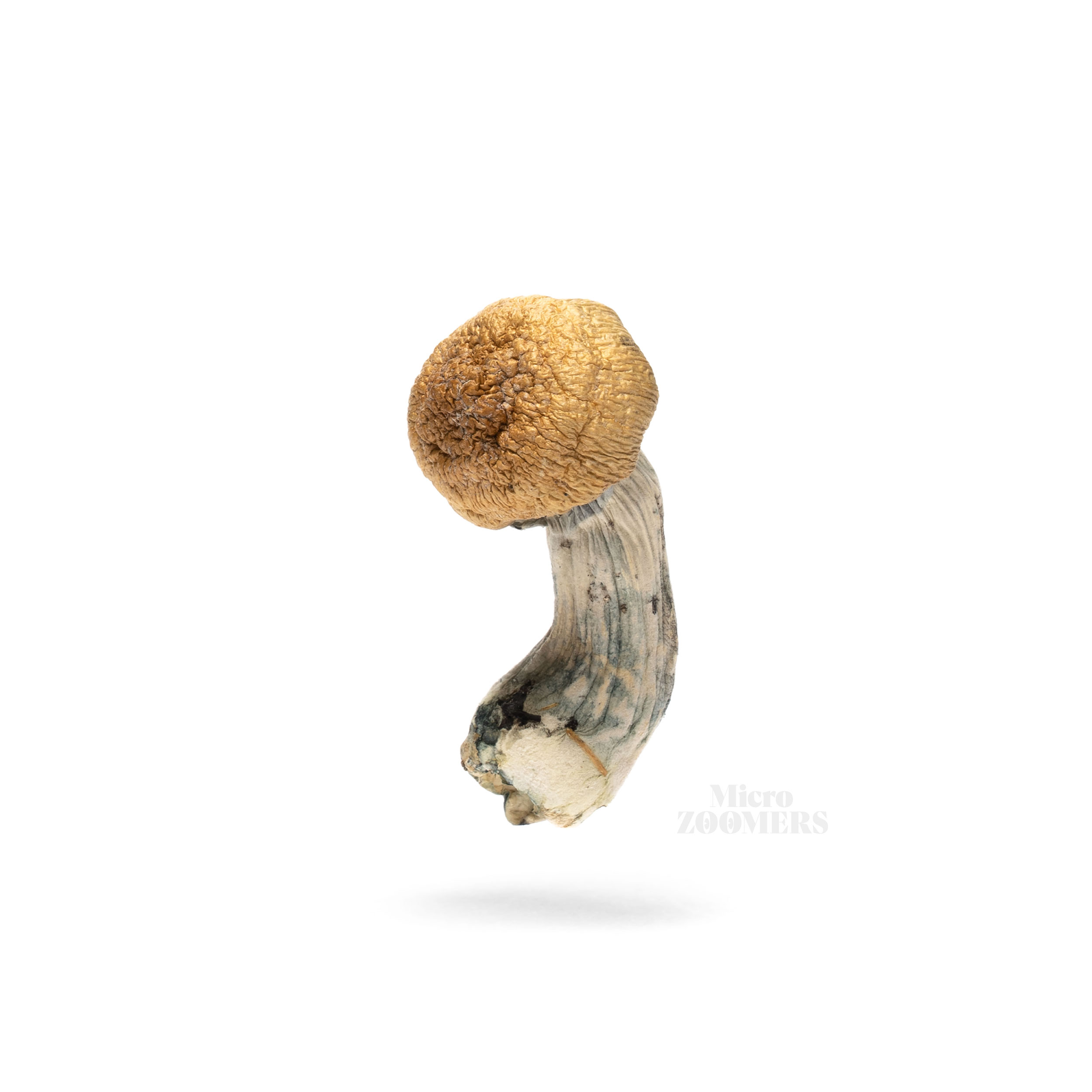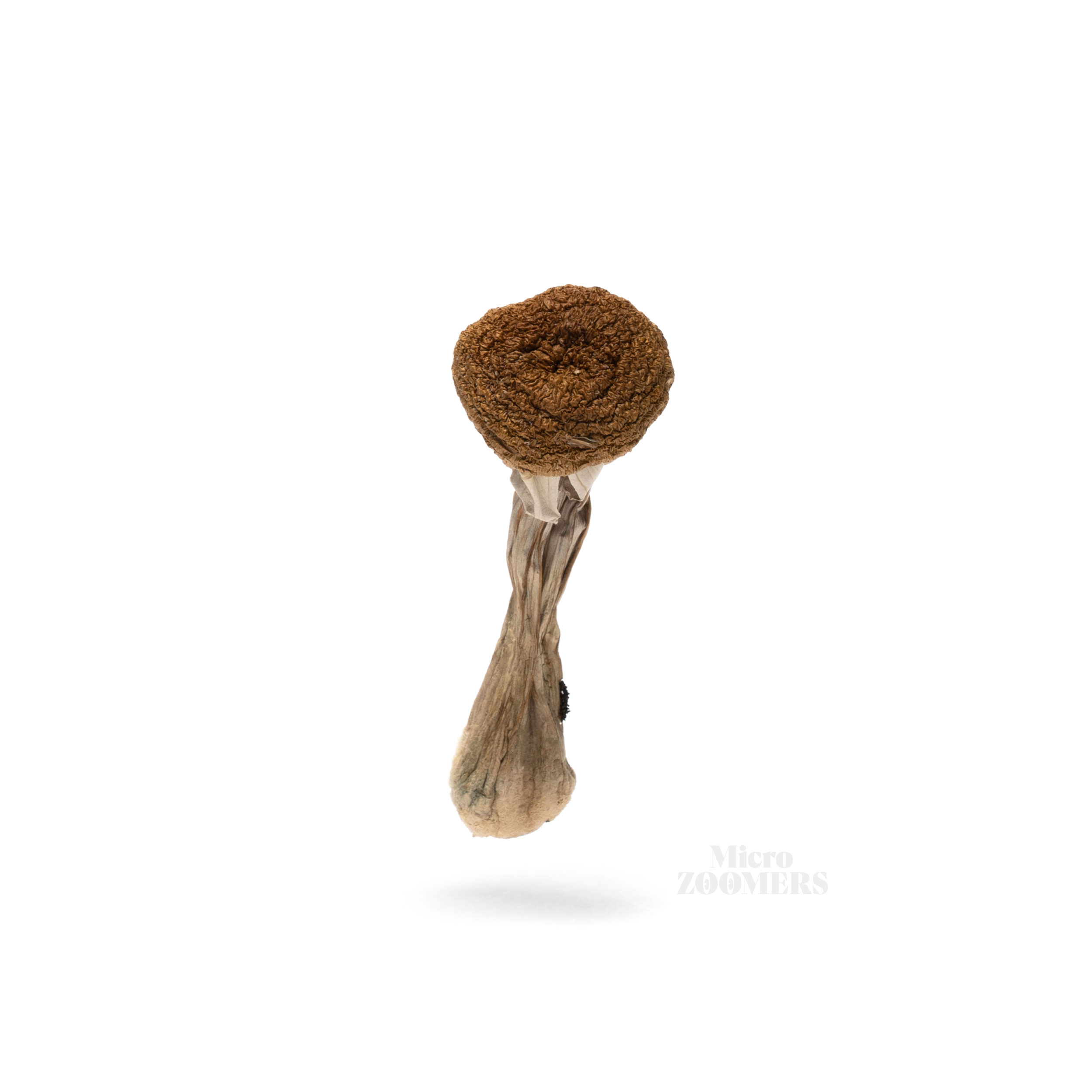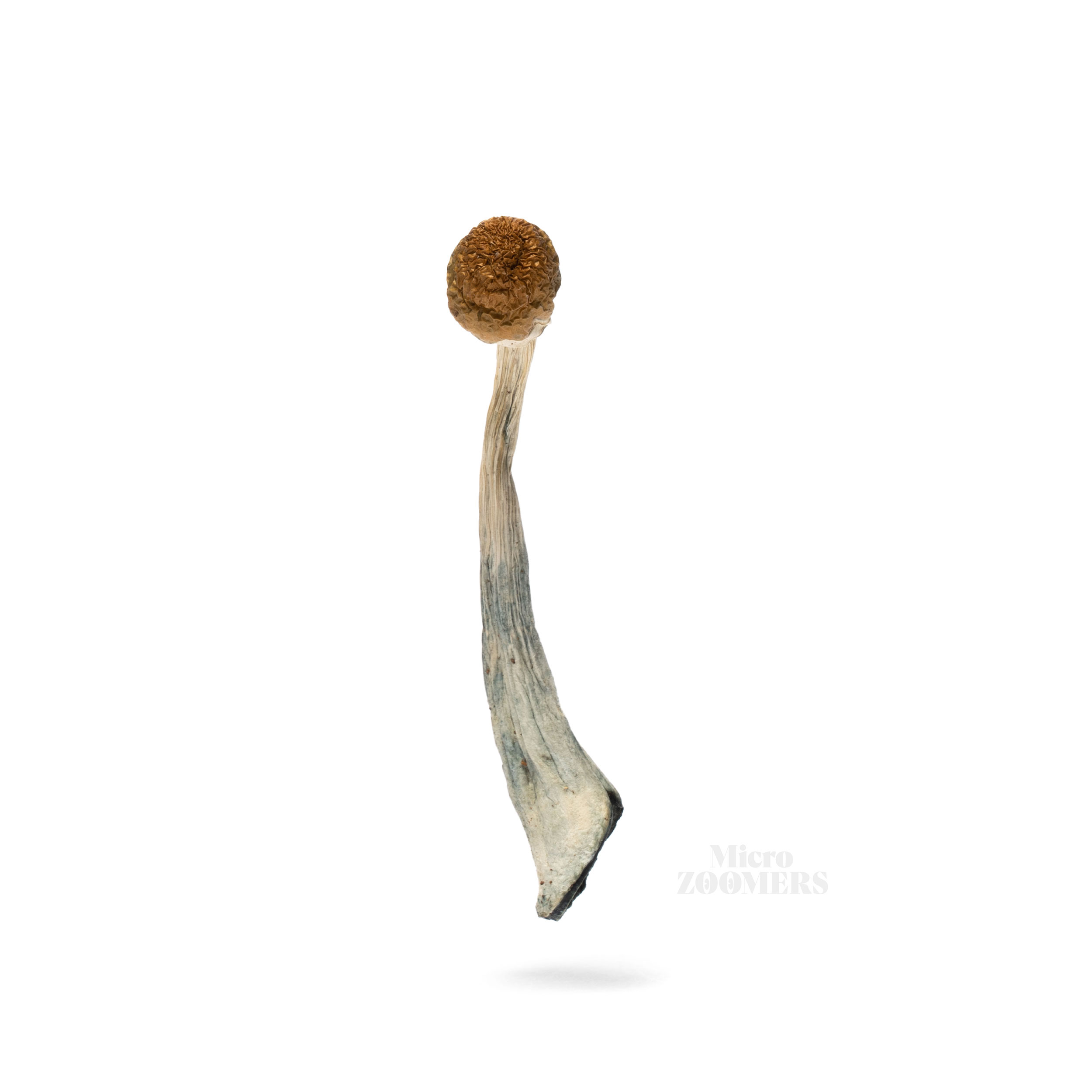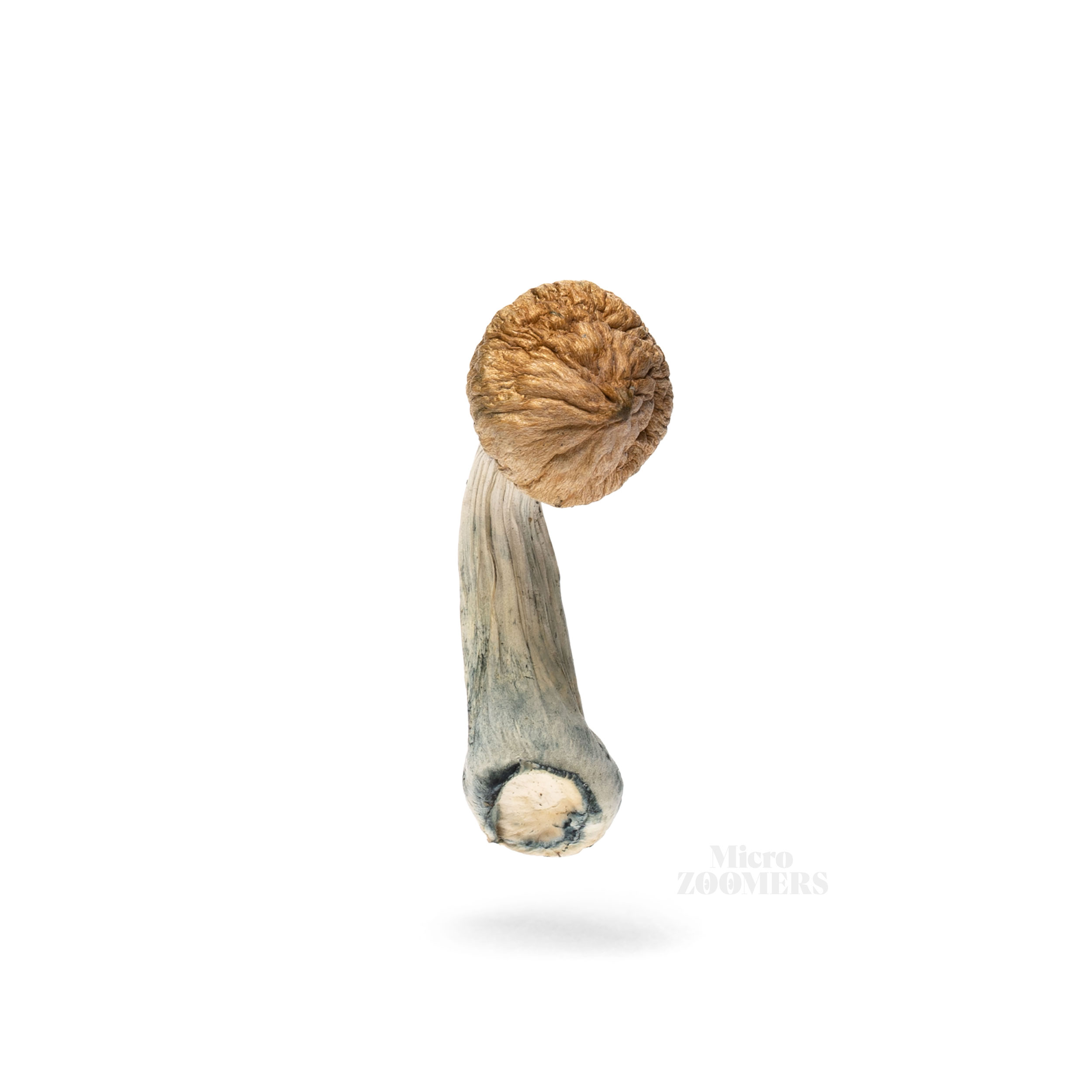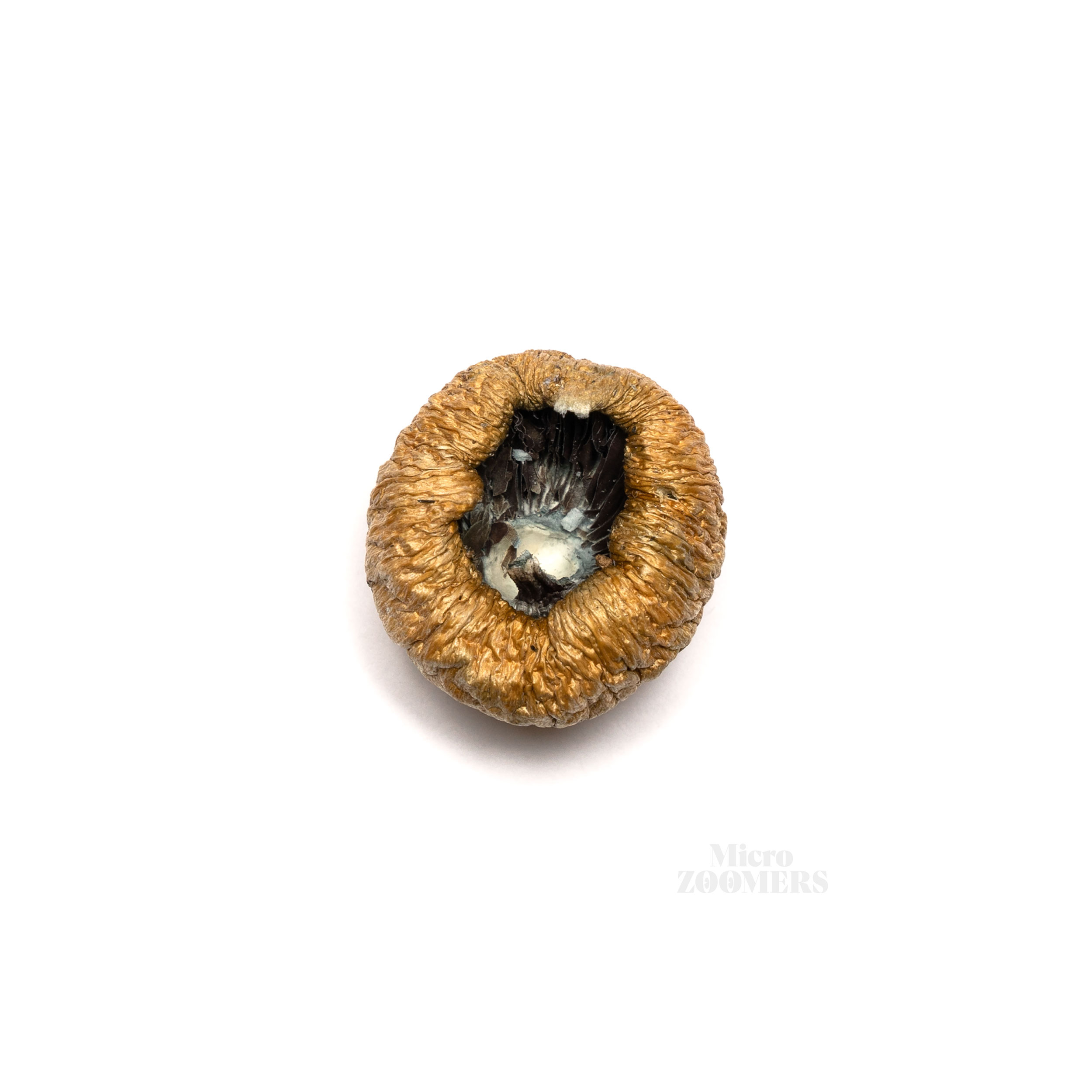MARTINIQUE CUBENSIS
The Martinique cubensis is a Psilocybe cubensis magic mushroom specie from the Caribbean Island of Martinique suspected to be none other than the naturally growing Psilocybe yungensis.
Distinguishable by its orangish color, the Martinique cubensis grows in large numbers and its cap has a penchant to remain conical at maturity, giving place to an eye-catching and pronounced nipple-like umbo (though less eye-catching as the P. mamillata.)
With a mild to moderate potency, the Martinique cubensis is a widely distributed magic mushroom that favours flourishing on decomposing wood stumps or wood debris, in coffee plantations and cloud forest in altitudes of 1000 to 2000 meters.
The creole-speaking island of Martinique has a tropical climate and a remarkably constant hot and humid weather all year around; these optimal conditions make it a perfect habitat for the Martinique cubensis to thrive in.
Known as the island of iguanas and flowers, Martinique is a fertile volcanic land with a luxuriant vegetation and tortuous relief.
Like other islands, it was conquered many times and boats brought in a variety of new living organisms. A specie named Psilocybe subyungensis share a very similar appearance to Martinique cubensis but is found only in Venezuela. Coincidently, Venezuela is the country of origin of the Kalinago, the rumoured cannibal warriors known to have massacred the original inhabitants of Martinique, the gentle Arawaks.
Martinique cubensis also shares features with Psilocybe aztecorum and the Ecuador strain.
Reported growing in various states of Mexico, Martinique cubens is consumed by the Mazatecs Indians of Oaxaca for entheogenic purposes and referred to as the “genius mushroom” or the “divinatory mushroom”.
Martinique cubensis’ undeniable transcending powers make it the ultimate sacred strain when it comes to psychedelic journeys. Its ritualistic consumption by the Mazatecs puts it amongst the many sacred teonanacatl species such as P. mexicana.
Reported to foster a dreamy state of mind with a very relaxing body high, we can only suspect this mushroom is perfect for healing journeys: to escape everyday stress or to uplift the mood, to find new creative pathways or fold in laughter, the Martinique cubensis is the magic mushroom that will make you surrender to the joys of the psilocybin. Because it is a milder strain, Martinique cubensis can be a good candidate for discovering the benefits of micro-dosing.
If you are looking for a smooth day to day partner to help enhance your performance at work, or your overall mood, this islander mushroom may just make your routine a little less boring.
If you’re curious to know what strains we recommend for newbie-psychonauts, have a look at our list of best magic mushrooms for beginners.
Visual Description
MARTINIQUE CUBENSIS Potency
Habitat Origin


